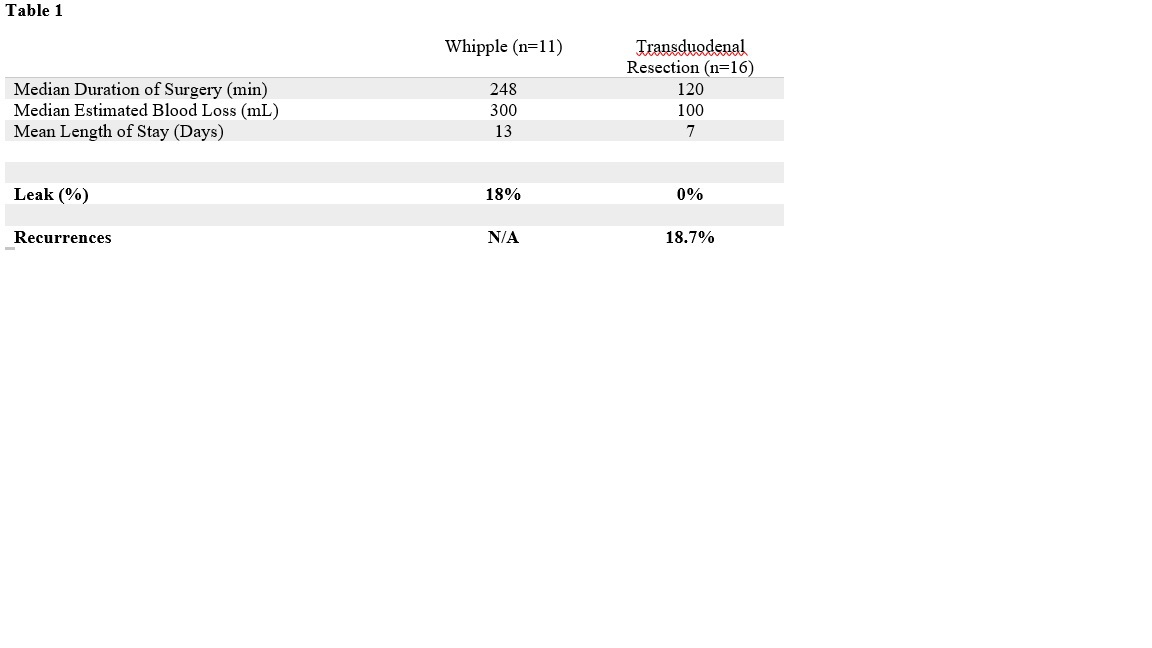|
Back to 2017 Posters
TRANSDUODENAL RESECTION FOR DUODENAL ADENOMAS MAY BE UNDER UTILIZED TOOL
Edward E. Cho*, Peter Deleeuw, Alyssa J. Chapates, Houssam Osman, D Rohan Jeyarajah
Department of Surgery, Methodist Health System, Dallas, TX
Introduction
Duodenal adenomas (DAs) are uncommon precancerous pathologies with malignant potential. Currently transduodenal resection and the Whipple procedure remain the surgical options for these lesions. The optimal surgical management of DAs remain controversial.
Method
We performed a retrospective review of 27 patients at our institution who received either a Whipple procedure (40.7%) or a transduodenal resection (TDR) (59.3%) for ampullary and nonampullary duodenal adenomas. Perioperative and postoperative outcomes were compared between the two groups.
Results
Both groups had similar demographics. Median operative time and median estimated blood loss (EBL) were longer in the Whipples group than the TDR group. Mean length of stay was longer in the Whipple group vs TDR group (12 vs 7 days). 18% of patients who received the Whipple procedure subsequently developed a subclinical pancreatic leak controlled with a drain. No bile leak was seen from the duodenotomy with the TDR patients. 3 patients (18.7%) who received TDRs developed recurrent adenomas. Two of these patients subsequently received a Whipple procedure. This is summarized in Table 1.
Conclusion
TDR has the perioperative advantages of less operative time, less EBL less hospital length of stay and a low postoperative morbidity. Although recurrences are possible after TDR, majority of our patients who underwent TDR are adenoma-free without being subjected to the morbidity and mortality of the Whipple procedure. Due to the safety and potentially curative benefit, TDRs should be implemented as part of the clinical algorithm in treating selective patients with duodenal adenomas.

Back to 2017 Posters
|


